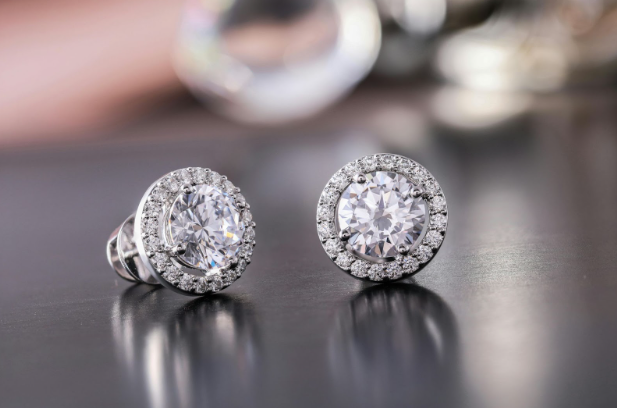
Lab-Grown Diamonds Guide
Everything You Need to Know
Diamonds have long been a symbol of love, commitment and luxury. Traditionally, these precious gemstones are formed over billions of years deep within the Earth. However, advancements in technology have made it possible to create dazzling diamonds in a laboratory setting. Modern lab-grown diamonds offer a stunning alternative to natural diamonds, appealing to those who value sparkle and quality. In this guide, we'll explore everything you need to know about lab-grown diamonds, from what they are and their history to how they differ from natural diamonds and why they might be the perfect choice for your engagement ring.
What is a Lab-Grown Diamond?
A lab-grown diamond, sometimes called a synthetic or cultured diamond, is created in a laboratory environment using advanced technological processes that replicate the natural conditions under which diamonds form in the Earth’s mantle. These diamonds are composed of the same carbon atoms arranged in exactly the same crystal structure as natural diamonds, making them virtually identical in physical, chemical and optical properties.
How Are Lab-Grown Diamonds Made?
There are two primary methods used to create lab-grown diamonds:
High Pressure High Temperature (HPHT): This method mimics the natural process of diamond formation by using high pressure and high temperature to convert carbon into a diamond crystal. The HPHT process involves placing a carbon source in a press that applies extreme heat and pressure and transforms the carbon into a diamond.
Chemical Vapor Deposition (CVD): The CVD method involves placing a diamond seed in a chamber filled with carbon-rich gas. The gas is ionized into plasma, breaking down the carbon molecules, which then deposit onto the diamond seed and grow layer by layer to form a diamond crystal.
The Glittering History of Lab-Grown Diamonds
The project of creating lab-grown diamonds, dubbed “Project Superpressure,” began in the 1940’s, but progress was delayed due to World War II. Then, in 1954, General Electric (GE) successfully produced the first commercially viable synthetic diamonds using the HPHT method. Initially, these diamonds were primarily used for industrial applications, such as cutting and drilling tools, due to their hardness.
In the early 2000s, advancements in technology and techniques allowed for the production of gem-quality lab-grown diamonds. The CVD method, in particular, played a significant role in making high-quality synthetic diamonds more accessible for jewelry. Today, lab-grown diamonds are increasingly popular in the jewelry market, offering an affordable alternative to natural diamonds.
How Lab-Grown Diamonds Differ from Natural Diamonds
While lab-grown and natural diamonds are virtually identical in appearance and properties, there are some key differences to consider:
Origin: While natural diamonds are formed over billions of years under extreme heat and pressure in the Earth’s mantle and are then brought to the surface through volcanic eruptions, lab-grown diamonds are man-made in a laboratory over a period of weeks using advanced technological processes.
Price: Natural diamonds are generally more expensive due to their rarity and the extensive mining process required to extract them. Lab-grown diamonds are typically 20-40% less expensive than natural diamonds of similar quality, making them an affordable option.
Inclusions and Impurities: Because they’re formed from natural processes, natural diamonds often contain natural inclusions and impurities formed during their growth over billions of years. In comparison, lab-grown diamonds typically have fewer inclusions, and advanced techniques can produce nearly flawless diamonds.
Why Choose Lab-Grown Diamonds for Your Engagement Ring?
Lab-grown diamonds offer excellent value for money. Because they are generally less expensive than natural diamonds, you can find a larger or higher quality diamond within your budget. This affordability allows you to choose a more impressive stone or allocate more of your budget to other aspects of your engagement ring, such as the setting or additional gemstones.
Lab-grown diamonds are available in a wide range of shapes, sizes and quality grades, just like natural diamonds, so whether you prefer a classic round brilliant cut or a unique fancy shape, you can find a lab-grown diamond that meets your exact specifications. These diamonds are also graded by the same standards as natural diamonds, ensuring you receive a high-quality stone with exceptional brilliance and sparkle.
Embracing lab-grown diamonds means embracing technological innovation. These diamonds represent the cutting-edge of scientific advancement and modern jewelry design. By choosing a lab-grown diamond, you are supporting the future of the jewelry industry.
Shop Lab-grown Luxury at Joyce's Jewelry
When it comes to purchasing lab-grown diamonds, Joyce's Jewelry is the best place to shop for fine jewelry. We offer both natural diamonds and a stunning selection of lab-grown diamonds in various shapes, sizes and settings, ensuring you find the perfect engagement ring to symbolize your love. Whether you choose a natural diamond or lab-grown, Joyce's Jewelry is committed to providing high-quality, ethically sourced diamonds that meet the highest standards of craftsmanship and beauty. Visit our store today for exceptional service and the area’s widest selection of fine jewelry.
Related Article: Spring Sparkle: Explore Unique Diamond Shapes for the Season


